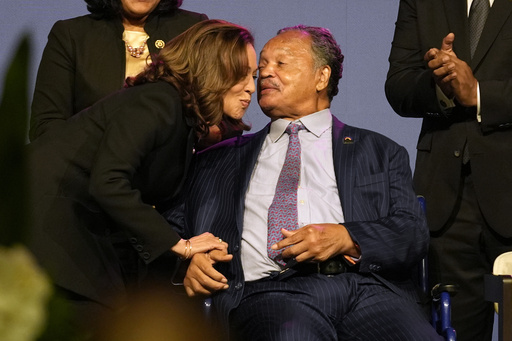Kamala Harris, the first Black woman and Asian American to become vice president, possesses a versatile skill set. She is adept at handling various roles, from questioning Supreme Court nominees to participating in cultural celebrations, demonstrating her ability to navigate different environments effectively. Harris, the daughter of Jamaican and Indian immigrants, is skilled at code-switching, a practice involving adjusting speech style and expression to effectively communicate and connect with diverse audiences.
Former President Donald Trump, in a heated exchange at a meeting of the National Association of Black Journalists, demonstrated a lack of understanding of code-switching. Trump’s comments implied Harris was being inauthentic by embracing her multicultural heritage. This highlights a prevalent belief in politics that whiteness and speaking in standard English are the default norms.
Christine Chen, co-founder of APIAVote, emphasized the importance of embracing multiple identities to connect with diverse communities. Accusations by Trump that Harris has misled voters about her race reflect a misunderstanding of her background. Harris’s ability to code-switch does not diminish her genuine identity as a Black and Indian American woman.
Code-switching is a common practice among politicians of color to effectively communicate with constituents and voters, especially among multiracial individuals in the U.S. It is a valuable tool for individuals facing systemic racism, helping them navigate various situations and enhance their opportunities.
Rachel Scott of ABC News countered Trump’s claims about Harris’s race by highlighting elements of her biography that attest to her diverse heritage. Harris’s attendance at Howard University, a historically Black college, her involvement in a Black sorority, and her family’s immigration history illustrate her multilayered identity.
Harris has consistently embraced her Black and Indian heritage throughout her career, rejecting the notion that she code-switches for political gain. Her statements over the years have highlighted the influence of both her African American and Indian backgrounds on her life and values.
Critics, including Sen. JD Vance, have questioned Harris’s authenticity, citing perceived shifts in her speech and behavior based on her audience. However, these critiques overlook the nuances of navigating identity as a person of color in the public eye. Political figures of all backgrounds can foster authentic connections with communities by showing empathy and responsiveness to their needs.
In conclusion, Harris’s experience reflects the complexities faced by individuals navigating multiple identities in public life. Her ability to code-switch and connect with diverse audiences underscores the importance of understanding and celebrating the diverse backgrounds that contribute to a person’s identity and experiences.


